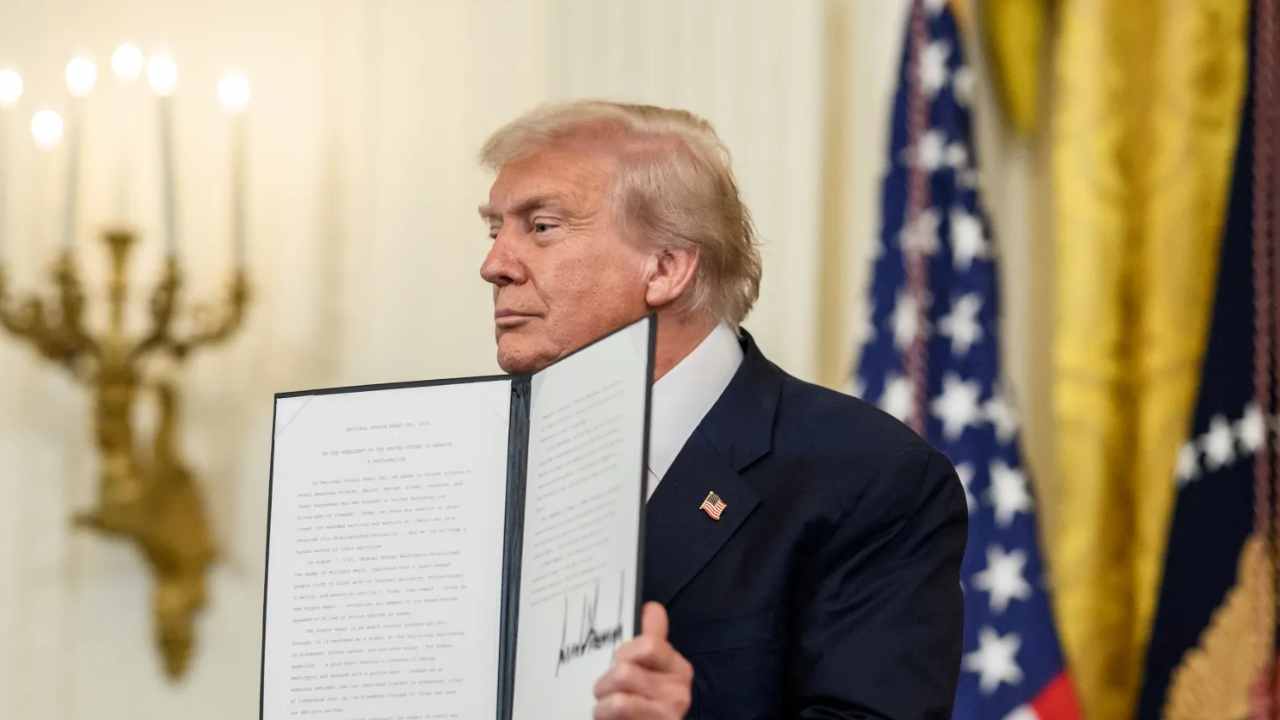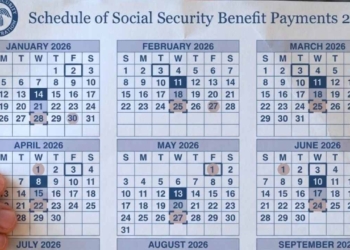The United States President Donald Trump has proposed sending stimulus checks of $1,000 to $2,000 to Americans, funded not by traditional debt but by revenue from tariffs. The idea, announced in an October 3, 2025, television interview, reframes direct payments as a “dividend” returned to citizens from trade policy earnings. This comes amid ongoing legal disputes over Trump’s tariff measures and persistent growth in the national debt.
Trump’s stimulus checks proposal has ignited discussion around its economic feasibility and political timing, particularly with midterm elections approaching. While the concept of stimulus checks remains broadly popular, the choice of tariffs as a funding source introduces unfamiliar variables into the policy equation.
New stimulus checks possibly coming: Trump’s idea in a nutshell
Trump outlined that tariff income would first be used to reduce the national debt, with remaining funds directed to individuals. In his interview with One America News, he stated, “We’re paying down the debt. Because the people have allowed the debt to go crazy.”
He added, “We could also do a distribution to the people, almost like a dividend for the people of America.” The suggested amounts of $1,000–$2,000 per person are intended to partly offset higher consumer prices resulting from tariffs.
This approach echoes the COVID-19 stimulus checks, but differs in funding. The new proposal aligns with legislative efforts such as Senator Josh Hawley’s “American Worker Rebate Act,” which supports payments to individuals from tariff revenues. Hawley endorsed Trump’s vision, saying it lets “American workers benefit from the wealth that Trump’s tariffs are bringing back.”
Other stimulus checks under Trump’s administration
During the pandemic, the federal government issued three rounds of direct payments: two under Trump and one under Biden. Those earlier checks were financed through federal borrowing, not dedicated revenue streams. Trump has previously expressed interest in linking government savings to public dividends, including talks in early 2025 about $5,000 checks based on budget cuts.
The current proposal is tied directly to tariffs imposed since April 2025, which have raised prices on imports such as steel and soybeans. By proposing a rebate, Trump aims to counter criticism that tariffs burden U.S. households.
Where’s the money coming from?
A central question is whether tariff revenues can cover the cost. Trump has claimed tariffs could bring in “more than a trillion dollars a year,” but reports indicate actual collections since April are around $215 billion. Covering checks for all U.S. adults would require roughly $330–$660 billion, depending on the amount.
Approval from Congress would be necessary to authorize payments: a significant obstacle given the divided legislature and recent fiscal disputes. Additionally, ongoing lawsuits threaten the tariff structure itself. If courts rule against the administration, planned revenue could dissolve, upending the proposal’s financial foundation.
Some does not agree on giving new stimulus checks
Some households, especially retirees and low-income families, would welcome the financial relief. However, economists warn that injecting hundreds of billions into the economy could reignite inflation, similar to the 7–9% surge seen after pandemic-era stimulus.
Others note that tariffs already increase annual household expenses by an estimated $3,800—far more than the proposed checks would return. Critics say this leaves families at a net loss.
Politically, Republicans like Hawley see the checks as a “win for workers,” while Democrats describe tariffs as a “hidden tax” and the rebate as inadequate. On social media, reactions vary from praise—“If Trump gives $2,000 checks from tariffs, he’d be the most popular president”—to skepticism—“$2,000 doesn’t cover the $3,800 costs.”
What the Treasury head say about the potential stimulus checks
Treasury Secretary Scott Bessent has commented on the idea of using tariff revenues for stimulus checks or “rebate” payments to Americans on several occasions, primarily in August and September 2025 interviews.
His stance has consistently prioritized using the funds to reduce the national debt and deficit before any distributions, though he has expressed openness to future “offsets” for the public once those goals are met.
He has dismissed immediate rebate checks as premature but highlighted surging tariff revenues that could eventually support such initiatives. Below is a compilation of his key direct quotes, drawn from public statements, with context. No new quotes from Bessent specifically addressing President Trump’s October 2025 proposal (for $1,000–$2,000 “dividends”) were found in recent sources, but his revenue projections align with the plan’s feasibility.







